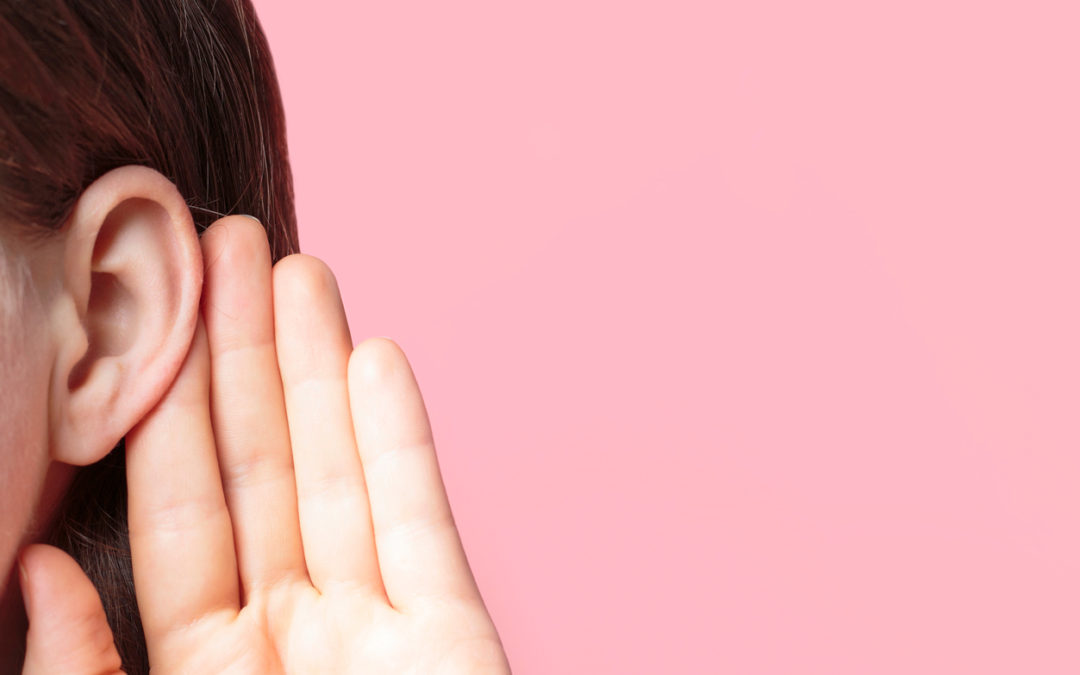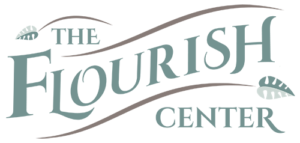
by Jen Owen, N.P. | Aug 27, 2021 | Integrative Medicine, Mind-Body Medicine, Seasonal Health
For years, I’ve been checking hormone panels for females experiencing many different hormonal symptoms. Overall, the most common pattern I’ve seen is referred to as estrogen dominance. The estrogen level is normal while the progesterone level is low. This creates symptoms such as bloating, breast tenderness, low sex drive, headaches, irregular periods, decreased sex drive, mood swings, fatigue, trouble sleeping, weight gain around the abdomen and hips, foggy thinking & memory loss, and PMS.
This pattern often occurs when the person is experiencing a higher-than-normal stress level. Because progesterone naturally provides some of our cortisol (stress-managing hormone), during times of increased stress, the body will “steal” progesterone to make more cortisol.
I’m very used to seeing this and treating this.
What I’m not used to seeing is a pattern that has become quite prevalent over the past 1.5 years during the pandemic and other issues of these times.
In almost every hormone panel I’ve checked, another hormone is elevated: DHEA.
DHEA is short for dehydroepiandrosterone (D-hi-dro-epp-E-an-dro-ster-own), a hormone made by the adrenal glands located just above the kidneys. Of the more than 150 hormones made by the adrenal glands, the most abundant is DHEA. DHEA is generally converted into testosterone and estrogens.
Most of the time, when I check this hormone, it’s low. I’ve supplemented it many times in females to increase low testosterone and low estrogen.
Because DHEA is also produced from the ovaries, in the past I would see elevated DHEA associated with abnormal hair growth (think beard), acne, and PCOS.
Not now.
DHEA is appearing high across the board and not just a little high, it’s often double or triple the level it should be, without any of the usual and expected symptoms.
Now, this is not all bad news. Some studies suggest that DHEA may elevated as a counterbalance to elevated cortisol, so it’s likely a healthy adaptive response by the body.
At the same time, it means that the body is overloaded with stress hormones, and it’s working diligently to manage this and bring the body back to balance.
I’ve talked a lot about managing stress since COVID began. If you missed my previous posts, see the bottom of this page.
During the first year of the pandemic, I gave everyone a pass. I appreciate personally how hard it’s been to adapt to all of it; how challenging it’s been to eat right, find new ways to exercise, and avoid getting into negative habits to help manage our stress.
Now, we must face the reality that not much is likely to change anytime soon. We have to find ways to adapt, to manage our stress so that our bodies don’t take the toll from all of this.
We have to find new ways to experience joy, appreciation, love, and freedom.
When people come to see me, I can feel how much they want a quick fix to what they’re feeling. It’s frustrating to hear that stress is the underlying cause of their symptoms.
Yet, here we are and it’s been true for almost everyone I’ve seen.
The good news is that my stress-management toolkit is deep and when my patients implement the plans we develop together, they feel better.
Start with one thing…what’s the one thing that you could change in your life right now, that if you changed it, it would make a really big difference? Do that first and let it be for a few weeks. Then, work with the next thing. Trying to make a bunch of changes all at once simply creates more stress and likely, more DHEA.
If you’d like my help, schedule an appointment here.
Check out these articles to understand the stress response more fully and for more ideas of how to manage it:
Are You in Fight-or-Flight or Rest-and-Digest?
Self-Care for Stressed Times
Health Basics Check-in
Stop and Breathe…
How to Handle the Strain and Drain
My Top 5 Herb Choices for Stress
Exercise Can Be Fun
5 Tips to Protect Your Energy

by Jen Owen, N.P. | Jul 9, 2021 | Food Medicine, Mind-Body Medicine
This blog is about returning to the basics.
I’m not sure what it is about our society. We seem to have an “all-or-nothing” approach to health. If we’re not greatly restricting food, exercising in a bootcamp style, or majorly pushing our limits, we don’t really do anything.
I see this time and time again. People show up to my clinic exhausted. When I ask about their health habits, they tell me they try to do those things I mentioned above, but haven’t been able to maintain them.
Well, of course they can’t, and I couldn’t either.
When people focus on hard core health changes and can’t keep with it, they feel like they failed and then they forget to do the very basics to keep their bodies and minds well.
So, today as you read this blog, I want you to do a check-in about each area of life I discuss.
How are you doing in each category?
If any of the basic categories aren’t being fulfilled, start there.
If you’re doing all of these things every day, then come in for an appointment and we’ll dive into what else might be going on.
Water
I know this probably sounds very basic and yet, we all need water to survive. The old adage of drinking 8 glasses of water each day still works pretty well for most people. Yet, when I ask my patients how much water they’re drinking every day, the response is often 2-4 glasses.
And, remember that caffeinated drinks and alcohol are actually dehydrating, so you need extra water if you drink those.
Check-in: Track how much water you drink today and increase if needed.
Tip: Use an opaque water bottle or mason jar for your daily water so you can literally see how much you’re drinking.
Air
Another basic one, I know. During the vitals signs assessment, I check the oxygen saturation of my patients. The level that should be 100% (yes, even with a mask on). Most people come in around 95-97%.
This means that they are likely shallow breathing a good portion of the time.
When we’re running around in fight-or-flight all the time, we don’t take enough deep breaths, so we don’t circulate adequate oxygen to all of our parts. This leaves us feeling even more tired and when our brains don’t get enough oxygen, we can feel light-headed or experience foggy-thinking.
Check-in: Are you getting enough deep breaths in throughout the day?
Tip: Check out this blog and Stop and Breathe.
Food
Another interesting societal norm is that when we want to change our eating patterns, we almost always start with taking things away.
I actually recommend adding things in first. And, I start with the most obvious foods: fruits and vegetables.
Fruits and vegetables are full of the antioxidants our bodies require for proper cellular function and detoxification.
Check-in: Are you eating every color of vegetable/fruit every day?
Tip: Start first by eating the “Rainbow Diet”. Read more about that here.
Sleep
I know you know sleep is important for every cell and system in your body. Yet, it’s often one of the least valued components of flourishing health.
Many people stay up too late or don’t take advantage of times when they can sleep in.
I work with a lot of parents of small children who tell me that after the kids go to bed is the only time they have alone together. I get this. Time alone together is important. And, is there another time you could work out to be alone together? Maybe you could trade with another couple and each take each other’s kids once a week? Get creative.
Sleep truly needs to be at the top of the priority list.
Check-in: How much good quality sleep are you getting every night?
Tips: Sleep when your kids sleep. Go to bed early and relax with a good book if you don’t feel tired yet. Practice good sleep hygiene (Google this term if you don’t know what this is.)
If you still can’t sleep, come in for an appointment and we’ll get this sorted.
Next steps:
Once these four basics of human body function are met, you can start looking into body movement, love, joy, etc.
Those are basic human needs as well, yet when we’re not breathing, drinking water, eating foods that nourish us, or sleeping, not much else can fall into place.
At my clinic, I focus on treating the whole person and my practice has gotten more and more simple over the years. I’ve realized that more than anything people need help with life.
They usually don’t need complicated protocols or extensive health plans. They need help finding balance, peace, and more FUN!
Please stop beating yourself up with restrictive diets and rigorous exercise regimens.
Start with the basics and you’ll be amazed at how much small shifts in your daily life can bring about big changes.
Ready to dive deeper into the basics?
My online program, Health Transfomations is for you!
Work at your own pace on your own time and transform your life in 8 weeks.
Join the program and get started now!

by Jen Owen, N.P. | Jun 21, 2021 | Mind-Body Medicine
Life is getting more and more open. Things are slowly returning to normal.
Yet, many bodies are not.
I’m seeing more and more people who are concerned about weight gain they haven’t been able to resolve with diet and exercise, fatigue that doesn’t go away after rest, and/or trouble sleeping that isn’t helped with the usual sleep hygiene principles or supplements.
When we check labs, we’re finding elevated DHEA levels and cortisols that don’t follow the normal diurnal pattern. Cortisol should rise in the morning and gradually decrease throughout the day until becoming low at bedtime when melatonin takes over.
The lab findings we’re looking at are based on the adrenal glands, which are located just above your kidneys. The adrenal glands secrete hormones that help the body suppress inflammation, utilize fats, proteins, and carbohydrates, regulate blood pressure, and increase blood sugar when needed. When the brain senses stress, it signals the adrenal glands to secrete these hormones. To learn more, check out this blog where I go into more detail about the anatomy and physiology of the adrenal glands.
In times of acute stress, the adrenal glands will secrete extra DHEA and cortisol to help the body adapt. This is perfect when we’re running from a bear. When there is no bear, it can be less than optimal and cause all the symptoms my patients are concerned about.
It seems that dealing with a pandemic and everything else that’s happened over the past 15 months is left many of us in a state of chronic stress.
In order to get out of this, there are two main recommendations I’d like to make:
- Rest More, and
- Have More FUN!
After having many conversations with my patients about all of this, I’ve come to the conclusion that the real issue comes down to control. Most of us feel the need to have control of everything that happens to us.
I’m not judging. I get it.
The problem is that over the past 15 months, we’ve had very little control.
And, the stress this has caused in us is making us sick.
I’d love for you to ask yourself how much fun you’ve been having lately. I mean TRUE FUN where you let your hair down, laugh raucously, or lie in the grass and watch the clouds.
When lab findings reveal issues with the adrenal glands, I’m finding that most of my patients then want to control this, too. They do hours of research on what’s going on and ask me about stringent lifestyle or supplement regimens.
This is the opposite of what needs to happen to resolve the issues.
The best way to fix your adrenal issues is to rest and have fun. Seriously. That’s it.
What times of the day are you most stressed?
What people or activities cause you stress?
What phone calls make your heart rate rise?
What does your morning routine feel like?
How do you relax in the evening?
Could you be over-exercising and causing even more stress to your body?
Take a look at your lifestyle, find your causes of stress, and do what you can to eliminate them. If stressful situations occur, take time to rest afterward. Let yourself yell and scream when you become angry. Dance, cry, shake it off, have fun with your family and friends, stop and take some deep breaths, whatever, just stop the cycle of the stress response.
Not sure where to start, here’s a blog to help.
Are you concerned about your adrenal function?
Feel free to schedule an appointment and we’ll dive into this together.
Otherwise, focus on fun and allow your body to rest completely.
And, be sure to share this article with friends who need to hear it, too.

by Jen Owen, N.P. | Jun 14, 2021 | Seasonal Health
It’s Summer time! As the seasons change, so does our health focus.
Health Focus: Heart & Small Intestine
In Chinese Medicine, there are two organs that correspond to the summer season: the heart and small intestine, the organs of the Fire element. They are responsible for warming and circulating.
The heart is most active in the summer season as it regulates blood circulation. If there’s imbalance in the heart channels, you can have high or low blood pressure, shortness of breath, weakness. or lethargy. Heart channel imbalance can also cause emotional disturbances such as lack of enthusiasm or joy, nervousness, and lower energy.
The small intestine works to digest foods, absorb their nutrients, and send them into the blood supply. If digestion is sluggish, you can feel bloated and gassy, or experience abdominal pain, heartburn, or general abdominal discomfort. Emotionally, a sluggish small intestine makes you feel overwhelmed, indecisive, or stuck.
Focusing on supporting these two organ channel system is key to having a light, energetic, and vital summer season.
Summer Food:
In the summer months, a focus on lighter foods is key. Luckily, Mother Nature provides for this perfectly.
Visit your local Farmer’s Market and buy all those fresh local, organic vegetables and fruits.
Eat less congesting foods during these months. Cutting back on dairy, heavy meats, fried goods, etc. will allow your body to better handle the summer heat.
Try making some cooling fruit waters, such as cucumber or lemon. Add fruit to water and keep chilled in the fridge.
Try brewing hibiscus tea, a cooling herb, and don’t forget to drink plenty of clean fresh water.
Summer Body Movement:
Exercise keeps your circulation moving and strengthens the fire element. During the summer months, don’t be afraid to break a sweat. Sweating clears the pores, enhances circulation, and helps the body with its detox mechanisms.
You don’t have to do anything fancy. Try walking for 30 minutes each day. If you haven’t been exercising for awhile, try starting with just 10 minutes and work your way up.
Need some other ideas for making exercise more fun? Check out this blog.
Summer Herbs:
Red Clover: an infusion of red clover is an excellent blood cleanser (red clover is a blood thinner, so please be advised.)
Nettle: nettles nourish and support every system in the body and from plentifully in most areas in the summer.
Dandelions: add the leaves to tea, salads, and smoothies for extra nutrients and enhanced detoxing.
Mint: all mints are cooling and make delicious sun teas.
Hibiscus: one of the best cooling herbs I know!
Summer is a great time for dusting off your battery and getting your ride moving again.
Go ahead and allow yourself some summer fun.
Take a break.
Soak up some rays.
Move your body.
If things don’t feel like they’re moving like they should be, it’s time for an appointment. Schedule yours here now.

by Jen Owen, N.P. | May 17, 2021 | Mind-Body Medicine
One of the most interesting things about my work is how often people already know exactly what’s going on with them. They already know the foods that bother them, the lifestyle changes that would make the biggest difference for them, and the general idea of why they feel they way they feel.
The challenge is in trying to figure out why they aren’t already doing “all the things”.
One of my life lessons and I’m guessing one of your is to stay present enough to actually listen to what my body is telling me.
I know it sounds a little silly and it’s so true.
When I listen to the nudges to eat/not eat certain foods, exercise, spend time outside, etc., I feel the best. When I ignore those nudges, I feel way less optimal.
Here’s what I’m talking about.
You know when you reach for that 3rd cookie and that little voice inside your head tells you not to eat it? And, you eat it anyway. And, you feel like crap? That’s what I mean by listening to your body.
Your body is in a constant state of trying to help you and it truly wants you to be well.
It’s giving you cues all the time:
Don’t eat that.
Go to bed.
Lie down and take a nap.
Stop scrolling social media
And on….
What’s your body telling you?
Are you listening?
Sometimes we need some outside support to help us get clear on what we already know deep down.
If I can help, you can schedule with me here.










Recent Comments